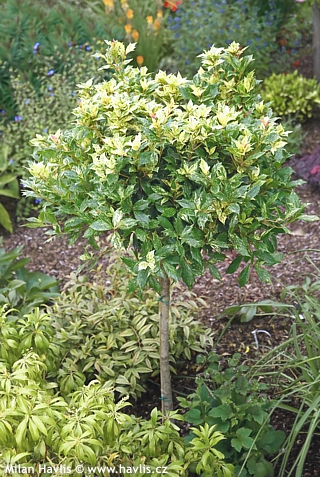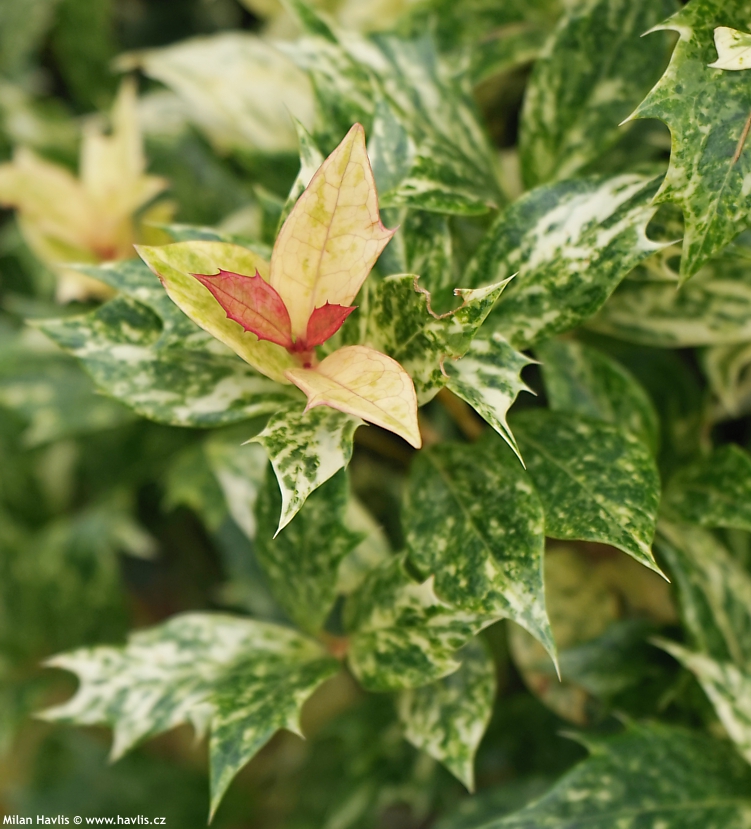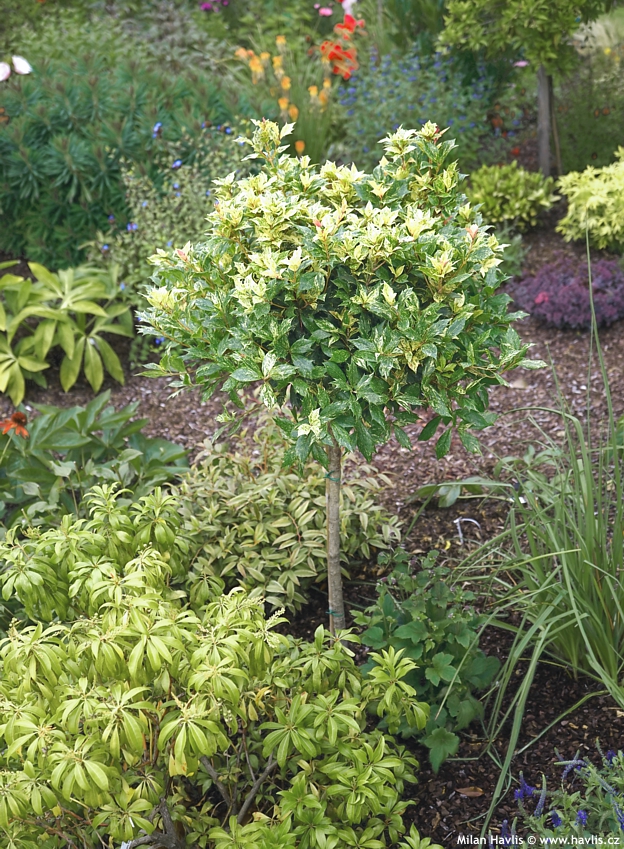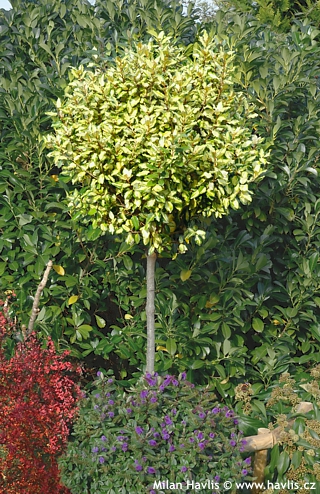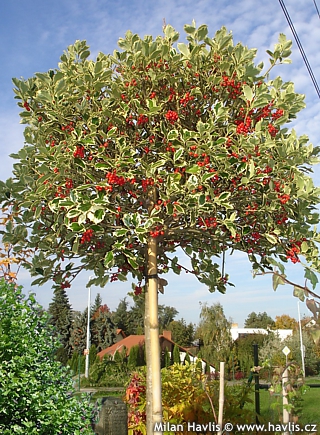Osmanthus heterophyllus (var. tricolor) 'GOSHIKI' holly osmanthus, false holly - STANDARD TREE
size/type
small tree,small tree
usual height
1-3m
usual width
0,5-1,5m
leaves
evergreen broadleaf
colour of leaves
flowers
insignificant or non-blooming
location
full to partial sun
soil type
acidic (peaty) to neutral
soil moisture requirements
evenly moist but well-drained
USDA zone (lowest)
7 (down to -23°C)
winter protection
for zone 5+6

for zone 7

categorized
Osmanthus
Osmanthus is a genus of only about 15-20 evergreen species and varieties, and a genus which I fell in love with the first time I saw a few plants of. Holly osmanthus or false holly is a taxon of evergreen shrubs and small trees native to East Asia, southern Japan, and Taiwan. It bears evergreen and usually thorny leaves which resemble hollies, but something seems to be wrong for the more experienced eye: holly leaves are alternate while osmanthus leaves are opposite.Description of the plant:
If you like spiny leaves and colours, this variety of holly osmanthus is a must have in your collection. Its name is Goshiki and you are right to assume that it comes from Japan where its name means 'Five Colors'. It was chosen not only for its spectacular colour, but also for its excellent tolerance to weather conditions, especially its hardiness. In 2012 it was awarded AGM (Ward of Garden Merit) by the Royal Horticultural Society (RHS) in England. It was first imported from Japan to the USA by the American collector of Asian plants Barry Yinger in 1970, from where it spread around the world as slowly as it grows. Despite its age it is still a bestseller.Goshiki osmanthus bears evergreen, conspicuously mottled, spiny foliage. Newly emerging leaves are bronze to purple, young leaves are light vanilla yellow with a fine green pattern, and mature leaves show dark green and creamy yellow marbling from summer onwards. The more sun it gets in the summer the more distinctly coloured it will be. The twigs and bark are light gray and smooth. We haven't seen any flowers on it yet.
Standard trees – tree forms of evergreen woody plants are becoming more and more popular. They can offer good screening at a desirable height blocking views from neighbouring windows if privacy is why you look for an evergreen tree. And they make a desirable display of foliage in a different horizon, plus allowing other smaller plants live under their canopies. Every standard tree needs a good support to protect the stem from moving, especially in wind. It can be removed after 3 years if the tree is established well. There is usually a bamboo stick attached to the tree trunk when you buy the plant. It needs to be removed before you tie the stem into your new support.
Although it can grow up to 3 meters in its natural habitat, it grows very slowly and its common size in Central European conditions is around 1.5 m in height and spread as a shrub. But if you want to know how tall your plant will get as a standard tree you have to add the stem height. It does not require pruning but it tolerates it very well, even in old wood, so you can shape it as you like. Spring pruning enhances branching, summer trimming is great for shaping.
Spiny-leaved osmanthus have long been used as a natural barrier against wild animals and cattle. Another important advantage is that they are long-lived shrubs or trees, and we are not talking about decades but hundreds of years. There are records of specimens whose age was estimated to 950 or more years. In other words, if located in an ideal spot it can be a plant that will be passed on by one generation to another. It looks great as an attractive evergreen specimen shrub or small tree, and does a good job as a hedge, too.
Grow osmanthus in moist but well-drained, humus rich, preferably acidic soil. Provide plenty of mulch for winter to protect the roots from fast freezing. It loves full sun but in colder regions find it a location sheltered from late winter and early spring sunlight but with plenty of light during the growing season. Use only plants with mature wood in zone 6 and transplant it no later than late summer in order to avoid frost damage after the first winter. Goshiki is a great performer when it comes to hardiness and has proved tolerance to at least -25 °C (USDA zone 6) without damage after 20 years of cultivation in more C.E. locations. It does not suffer from diseases, but vine weevil can be a problem. Drought tolerant.
Last update 01-09-2022
QUICK PRICE OVERVIEW
CURRENTLY SOLD OUT












